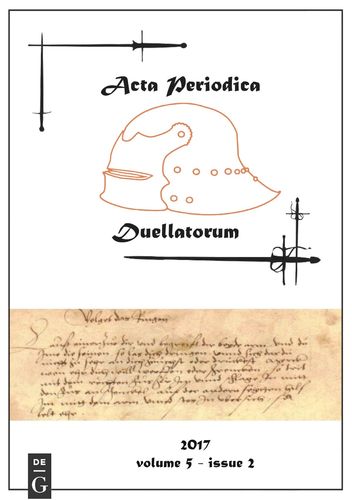Constriction – Construction, a short history of specialised wearing apparel for athletic activities from the fourteenth century to nineteenth century
Keywords:
constraint, construction, clothing, morality, body, dance, fencing, arming clothesAbstract
During the twentieth century, clothing permits a real freedom of bodily movement. However, when examining past athletic activity, we must take into account the period approach to the body: liberty of movement is at the same time controlled by morality, gestures and clothing. The French term “tenue” initially referred to behaviour, but since the end of the eighteenth century concerns the manner of dressing, and later by extension, the “dignity of conduct”. In the past times concerned with “sporting” activities such as the HEMA (Historical European Martial Arts), physical appearance is affected by rules of etiquette imposed by morality and civility. From the Middle Ages to the nineteenth century, each period offers a different overview of the dress standards in relation to the different approaches to corporal identity, and the constriction first necessary for military activities becomes indivisible from the moral and physical construction. As a practitioner of the 21st century, the question raises about our relationship, not only with our bodies but also with past cultures. As demonstrated by some concrete examples, if it is desired to fully approach the ancient practices, it is therefore necessary to also adopt the garment, in the same way as the accessories.Downloads
Download data is not yet available.
Downloads
Published
2017-12-18
Issue
Section
Articles
License
Copyright (c) 2017 Soline Anthore Baptiste, Nicolas P. Baptist

This work is licensed under a Creative Commons Attribution-NonCommercial-NoDerivatives 4.0 International License.
How to Cite
Baptiste, S. A., & Baptist, N. P. (2017). Constriction – Construction, a short history of specialised wearing apparel for athletic activities from the fourteenth century to nineteenth century. Acta Periodica Duellatorum, 5(2), 73-95. https://bop.unibe.ch/apd/article/view/6861



